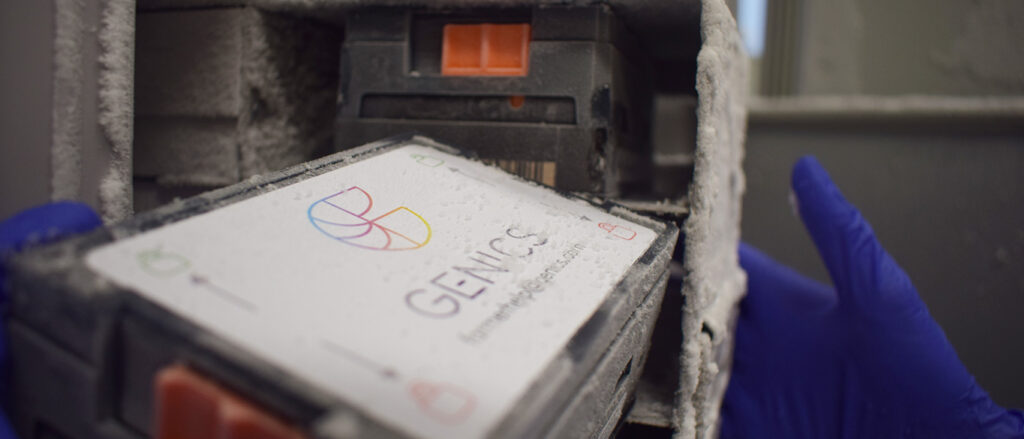WIL Placement Reflection
During my work-integrated learning (WIL) placement, I was tasked with enhancing the online presence, performance, architecture, and user experience of Genics.com.au. The company’s business goals were clear – driving increased customer engagement, brand visibility, and lead generation. My role was to align the website’s performance with these goals, requiring a blend of technical expertise, strategic thinking, and problem-solving skills. As a young professional, I was excited to take on this challenge, but I was also aware of the pressure that came with it.
About Genics
Genics Pty Ltd is an innovative biotechnology company at the forefront of addressing global food security challenges. Their primary focus lies in developing and commercialising cutting-edge early pathogen detection solutions, crucial in promoting sustainable and healthy food production systems. By harnessing the power of science and technology, Genics is committed to enhancing productivity, profitability, and biosecurity across various industries, ensuring a safe and abundant food supply for the world.

Taking On the Challenge
As soon as I started my WIL placement at Genics, I realised the need for an architectural improvement of the company website. To achieve this, I meticulously scrutinised their website and formulated a comprehensive plan to enhance it. Subsequently, I dedicated myself to revamping and optimising the site, persistently monitoring its performance and making necessary adjustments. Through this systematic and progressive approach, I significantly enhanced the company’s online visibility and user experience. I immensely appreciate the opportunity to have contributed in this manner and gained valuable expertise in the process.
Identifying Pain Points and Making Changes
One of the significant outcomes of the placement was a comprehensive understanding of the website’s pain points. I identified the areas that needed improvement and worked diligently to enhance the architectural design. I successfully migrated to a new cloud infrastructure, improving the website’s performance. This achievement was significant as it directly contributed to the company’s business goals.
Lessons Learned
The journey was challenging and not without struggle. Reflecting on my actions, I realised there were areas where I could have achieved a better outcome if I had taken different steps:
User Journeys
My limited knowledge of user experience research resulted in user personas and journeys needing more evidence.
This shortfall delayed the implementation of architectural changes.
Headless CMS
I needed to re-evaluate the resources required to implement NextJS as a front-end solution for the website.
My unsupported optimism made me pause this task midway in order to prioritise core implementations.
Despite these challenges, I learned valuable lessons that helped me grow professionally. I realised the importance of realistic planning and the need to distinguish between what’s urgent and vital. The WIL placement taught me that good planning is paramount, and one must address the critical points first and be flexible enough to adapt and make strategic decisions according to the situation. This realisation has made me committed to improving my planification and prioritisation skills, which I believe is crucial for my future career.
Success Areas
The placement was a success in terms of achieving the core set objectives. I enhanced the online presence, performance, architecture, and user experience of Genics.com.au. The website was moved to AWS Lightsail and is awaiting approval to replace the old one. Additionally, a CI/CD pipeline was created to allow for local website development, moving away from managing all the modifications from the WordPress dashboard. This achievement was a testament to the benefits of programming in supporting the architectural design and presentation of information.
Areas For Improvement
Looking back, there were areas where I could have improved. In terms of user experience research, I could have gathered more evidence to support the creation of user personas and user journeys.
This would have helped make more informed decisions regarding the design and what was urgent. Regarding the implementation of NextJS, I could have thoroughly investigated the resources required for this task. This would have helped set more realistic expectations and plan the project more effectively.
Conclusion
In conclusion, the WIL placement was a transformative experience that allowed me to grow professionally. It taught me the importance of teamwork, gathering information, researching, learning on my own time to understand the challenge, and realising what was achievable and what wasn’t. As I move forward, I am committed to using these lessons to continually improve my skills and knowledge, focusing on what’s urgent and vital and striving for continuous improvement. I am grateful for the opportunity to work with such a fantastic company and look forward to applying these lessons to future projects.